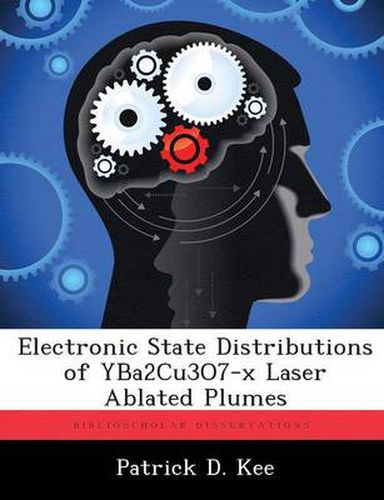Readings Newsletter
Become a Readings Member to make your shopping experience even easier.
Sign in or sign up for free!
You’re not far away from qualifying for FREE standard shipping within Australia
You’ve qualified for FREE standard shipping within Australia
The cart is loading…






This title is printed to order. This book may have been self-published. If so, we cannot guarantee the quality of the content. In the main most books will have gone through the editing process however some may not. We therefore suggest that you be aware of this before ordering this book. If in doubt check either the author or publisher’s details as we are unable to accept any returns unless they are faulty. Please contact us if you have any questions.
Emission from YBCO laser-ablated plumes was studied to characterize the PLD process. A KrF laser was used to ablate a bulk YBCO target at oxygen pressures ranging from 50-400 mTorr. Spectra were collected for the 500-860 nm bandpass at target distances ranging from 31.4-55.0 mm. Line fluences were corrected for self-absorption, and state distributions were calculated using recently updated transition probabilities. Electronic temperatures ranged from 0.28 0.01 eV to 0.37 0.03 eV for Y I, 0.28 0.01 eV to 0.35 0.03 eV for Ba I, and 0.40 0.02 eV to 0.48 0.05 eV for Cu I-consistent with prior literature. Results were insensitive to position and oxygen pressure. Spectrally-filtered imagery was used to determine plume velocities, shock strengths, and time-of-flight curves. Effects of time-varying temperatures and number densities on observed state distributions were modeled, predicting a slight elevation of Cu temperatures compared to Ba. However, this was not sufficient to explain experimental results. Surprisal analysis of state distributions resulted in linear constraints, consistent with an exponential gap law for electronic excitation.
$9.00 standard shipping within Australia
FREE standard shipping within Australia for orders over $100.00
Express & International shipping calculated at checkout
Stock availability can be subject to change without notice. We recommend calling the shop or contacting our online team to check availability of low stock items. Please see our Shopping Online page for more details.
This title is printed to order. This book may have been self-published. If so, we cannot guarantee the quality of the content. In the main most books will have gone through the editing process however some may not. We therefore suggest that you be aware of this before ordering this book. If in doubt check either the author or publisher’s details as we are unable to accept any returns unless they are faulty. Please contact us if you have any questions.
Emission from YBCO laser-ablated plumes was studied to characterize the PLD process. A KrF laser was used to ablate a bulk YBCO target at oxygen pressures ranging from 50-400 mTorr. Spectra were collected for the 500-860 nm bandpass at target distances ranging from 31.4-55.0 mm. Line fluences were corrected for self-absorption, and state distributions were calculated using recently updated transition probabilities. Electronic temperatures ranged from 0.28 0.01 eV to 0.37 0.03 eV for Y I, 0.28 0.01 eV to 0.35 0.03 eV for Ba I, and 0.40 0.02 eV to 0.48 0.05 eV for Cu I-consistent with prior literature. Results were insensitive to position and oxygen pressure. Spectrally-filtered imagery was used to determine plume velocities, shock strengths, and time-of-flight curves. Effects of time-varying temperatures and number densities on observed state distributions were modeled, predicting a slight elevation of Cu temperatures compared to Ba. However, this was not sufficient to explain experimental results. Surprisal analysis of state distributions resulted in linear constraints, consistent with an exponential gap law for electronic excitation.